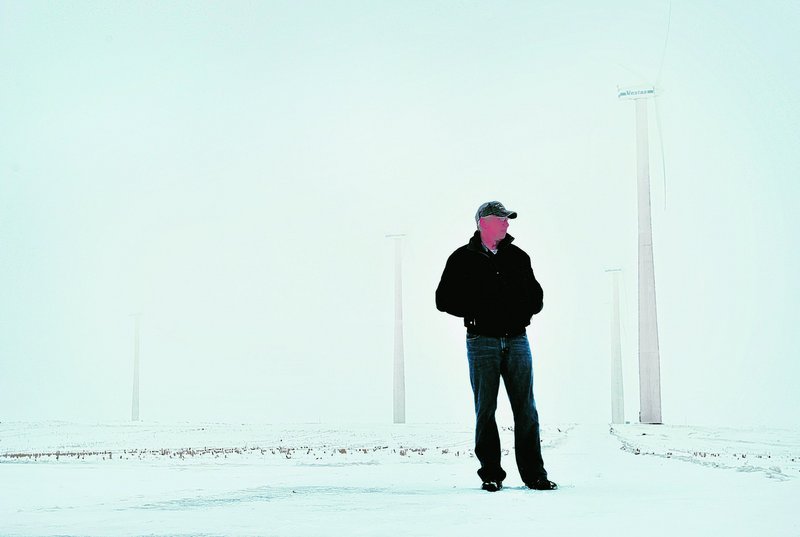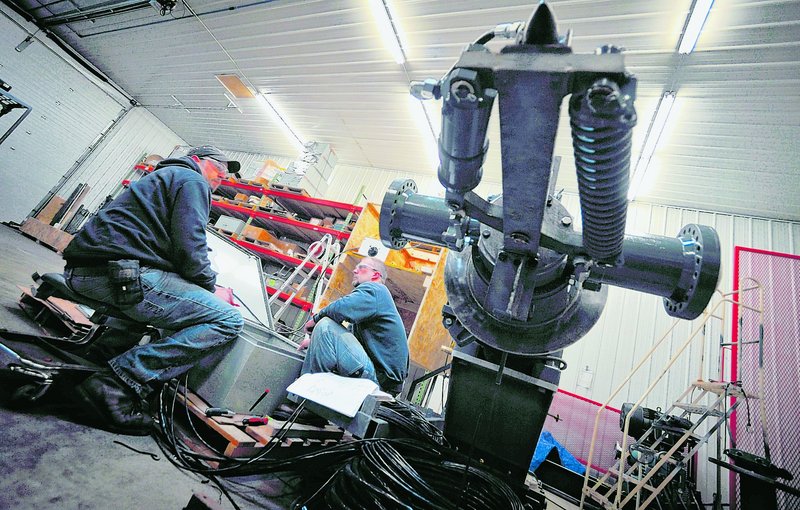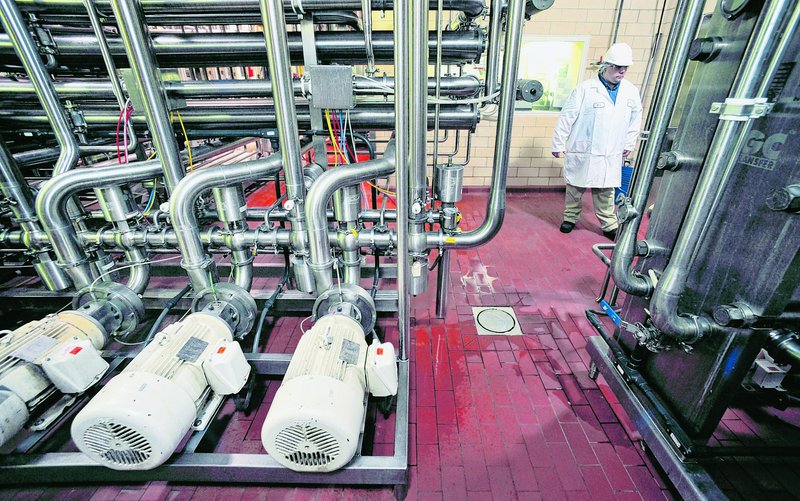WOODSTOCK, Minn. — A thick fog muffles Buffalo Ridge, the gusty plateau stretching diagonally from the Dakotas through southwestern Minnesota and into Iowa, and you can hardly see Dan Juhl’s crop of whirling turbines until the great white trunks are upon you.
They tower over Juhl Wind Inc.’s corporate headquarters, a garage-like building outside Woodstock, warmed by a stove burning hard yellow kernels of corn.
From here, worlds away from Wall Street, Dan Juhl runs Juhl Wind – one of a few publicly traded companies helping communities and farmers develop their own wind projects.
As giant corporations, such as Iberdrola and enXco, battle to build some of the biggest wind projects this country has ever seen, Juhl, 58, has become a national leader in his small niche.
Juhl Wind develops, manages and operates small wind projects owned by farmers, school districts and other community groups.
It has started building and selling small turbines now, but still expects most sales to come from its fee-based work. Development fees, for instance, are typically 3 percent to 5 percent of a project’s cost.
It’s been a winding road for Minnesota’s wind pioneer. After coasting through the recession largely stuck in neutral, Juhl turns on its first wind farm in two years any day now.
He has two dozen other projects in the pipeline that he’s determined to get through, even as banks remain tightfisted.
“Everybody’s reeling from the same problem,” he said.
But he’s got a plan, asking suppliers to help finance new construction and having director Wesley Clark, a retired U.S. Army general, raising an equity pool from investors.
Juhl fell into the wind business by accident. Born in Crookston, Minn., he didn’t discover wind until after returning from Vietnam and moving to Alaska. Juhl, a guitar player, was playing in bars around Fairbanks in the oil boom days of the mid-1970s.
The father of one of his guitar students refurbished old windmills – the kind from old farmsteads – and installed them for people in the bush, Juhl said.
One day the father invited Juhl to help set one up. Juhl grabbed the wrong wire, and the shock knocked him to the ground.
“Something hit me,” Juhl said.
He continued playing, but knew he wanted to get deeper into wind. Then, in 1978, the Public Utility Regulatory Policies Act was passed, requiring electric utilities to buy renewable power from independent producers at the same price they’d pay for it elsewhere.
“That’s what made me blink to start the business,” said Juhl.
He eventually designed and built his own 25-kilowatt wind turbine, but couldn’t find blades for the rotor in the United States. He finally found the blades from a Danish maker called Aerostar and wound up working for the company until 1987.
Wind farms were just starting to catch on in Minnesota when Juhl returned to the state, refurbishing small turbines and selling them to farmers and small businesses.
It wasn’t until 1999 that Juhl’s first community-owned wind farm turned on in Woodstock.
A year later, he finished his first farmer-owned project – two turbines for the Kas brothers down the road. After a few news stories about those, the fuse was lit, he said.
“Next thing I know I’ve got every farmer in the country calling me,” Juhl said.
They’re still calling. Juhl has developed 14 wind farms, which generate 117 megawatts of electricity, enough to theoretically power some 70,000 homes.
With his sons now working alongside him, Juhl wanted access to more capital.
He took the company public through a reverse merger with a New York shell company – a less expensive route to Wall Street for smaller companies, but a path that has its own risks.
Shares are often traded only on over-the-counter bulletin boards, not on big exchanges, so it’s harder to get noticed.
The reverse merger raised about $5 million from a handful of institutional investors.
That was July 2008, just weeks before the credit markets collapsed.
“Timing is everything,” sighed Juhl.
The Recovery Act stimulus package passed a year ago gave wind a boost by allowing developers to turn the existing federal 30 percent investment tax credit into a cash grant for 30 percent of a project’s costs 60 days after it becomes operational. Juhl has fingers crossed that lawmakers will extend the cash grant option, set to expire at the end of this year.
He continues to employ the “Minnesota flip,” where equity investors put up money at the start of a project to get special tax incentives and then, when the benefits are exhausted, flip the ownership back to local landowners and investors.
Juhl Wind is aiming higher, again. Company President John Mitola said he’s talking to investment bankers about underwriting a so-called “uplisting” of the company’s stock.
Nasdaq would be a bounding leap for the stock, which was trading Friday at around $1.81. That gives Juhl Wind a modest market cap of about $39 million.
Shares will have to reach $3 to qualify for Nasdaq, said Mitola, a former utility executive who lives in Chicago.
Although the company is still not profitable, revenue doubled in the third quarter thanks to the small turbines it sells.
“Next year we’ll be profitable for sure,” Juhl insists.
Juhl powers on. It’s hardly the first rough patch he’s hit in his 30-year wind odyssey. And the breeze just keeps blowing.
“It’s a cash crop,” he said. “It just keeps doing it.”
Copy the Story Link
Send questions/comments to the editors.





Success. Please wait for the page to reload. If the page does not reload within 5 seconds, please refresh the page.
Enter your email and password to access comments.
Hi, to comment on stories you must . This profile is in addition to your subscription and website login.
Already have a commenting profile? .
Invalid username/password.
Please check your email to confirm and complete your registration.
Only subscribers are eligible to post comments. Please subscribe or login first for digital access. Here’s why.
Use the form below to reset your password. When you've submitted your account email, we will send an email with a reset code.